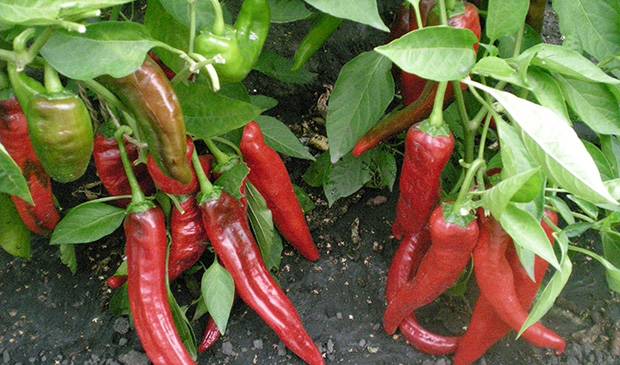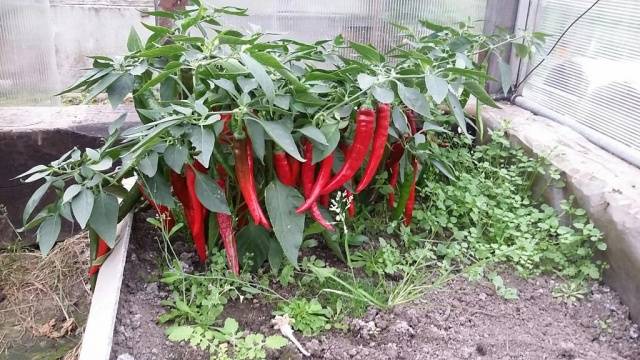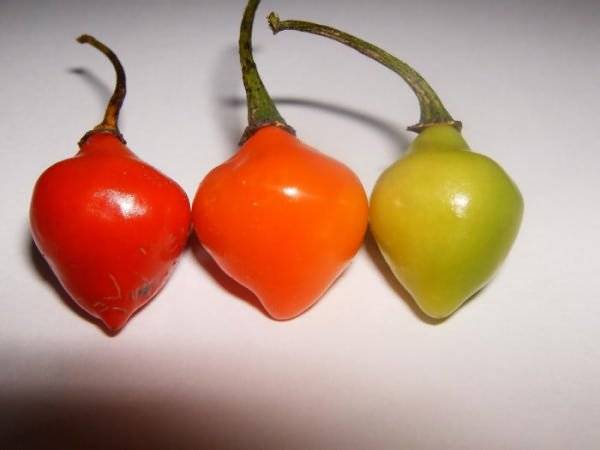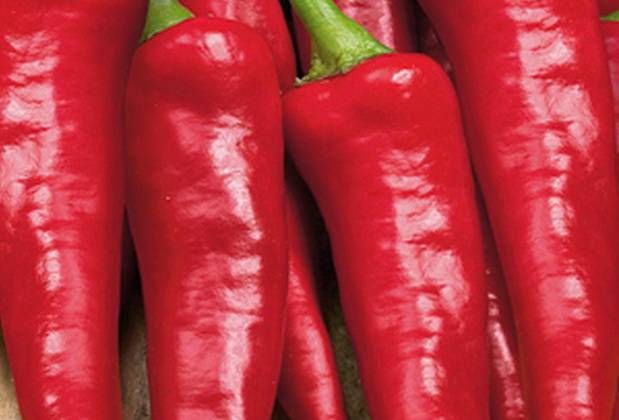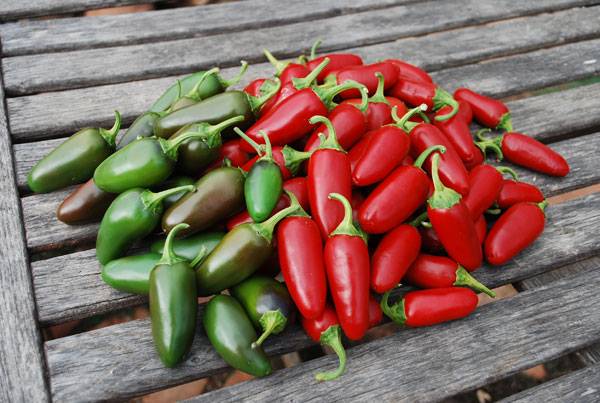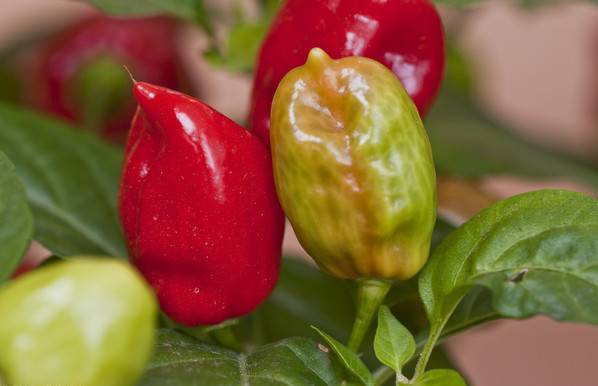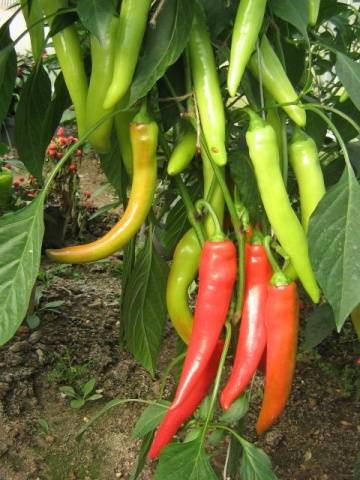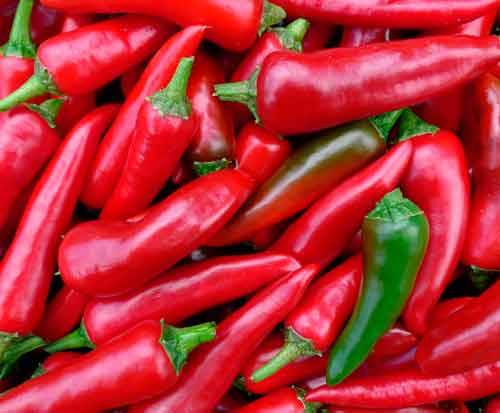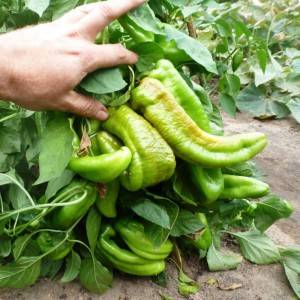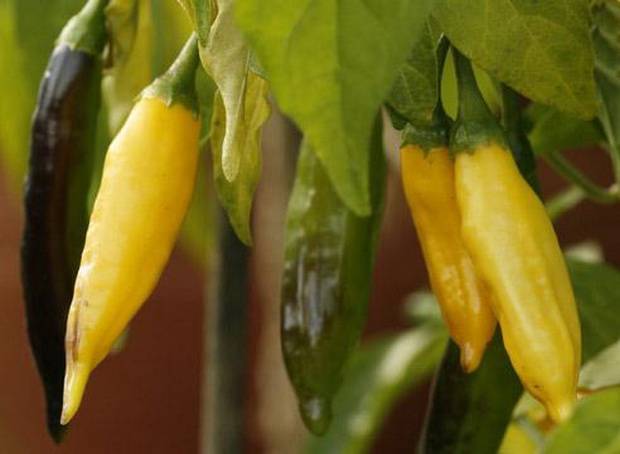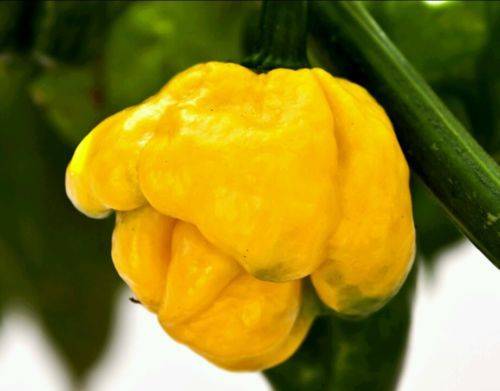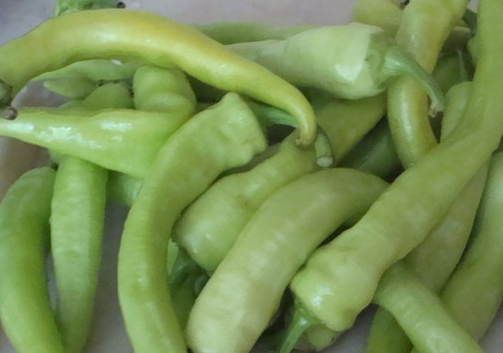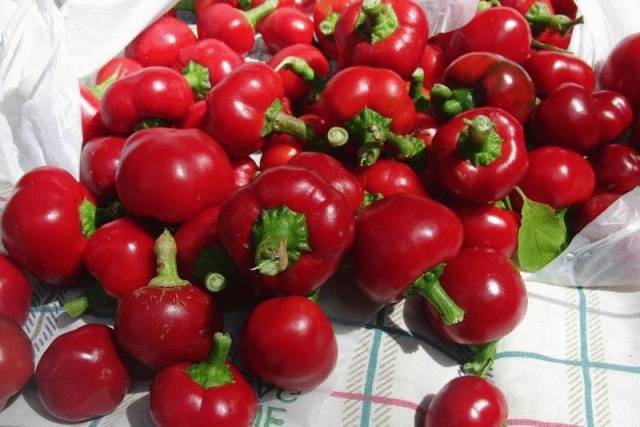Content
Fruit hot pepper are considered the best seasoning for many dishes. Moreover, this choice is not limited to one national cuisine. Bitter peppers are eaten by many nations. The wide variety of cultivars allows the cultivation of a crop whose fruits can have a flesh ranging from a slightly pungent taste to a highly pungent one. We will now try to consider the varieties of hot pepper, the most popular among domestic vegetable growers. Of course, it will not be possible to cover all of them, since there are more than 3 thousand varieties, but we will try to describe the best varieties.
Ranking of the top 10 varieties
It is wiser to start a review of the best varieties of hot pepper with an acquaintance with the ten most popular cultures. According to gardeners, the seeds of these varieties have excellent germination and bring the best harvest.
Double abundance
A very productive variety, when grown on a bush, it ties up to 40 fruits in five tiers. The pod is quite long, it can stretch up to 21 cm. The maximum weight of one peppercorn reaches 80 g. The plant is resistant to diseases, perfectly tolerates heat and drought.
Burning bouquet
A productive variety of bitter pepper, it bears fruit perfectly in open and closed beds. With a strong crown structure, the bush grows up to 0.5 m in height. The pods grow to about 12 cm in length. The mass of one fruit is 25 g. The pulp is fragrant with a very spicy aftertaste.
Chinese fire
After the seeds have germinated, the pods will begin to ripen in 100 days. The plant grows about 0.6 m in height, does not succumb to many diseases. The pepper grows 25 cm long, weighing about 70 g. The pods are even, conical, at the bottom they have a slightly curved tip. The harvested crop tolerates transportation very well.
Trinidad Small Cherry
This bitter pepper can be eaten after 80 days, but half a month should still pass until full maturity. The plant is very tall with spreading branches, growing from 0.5 to 0.9 m in height. The shape of a round fruit with a diameter of 25 mm is similar to a large cherry. The peppercorns cover the entire bush tightly. The pulp can be red or orange in color. The characteristic of this variety has one peculiarity. When ripe, the peppers take on a distinct cherry aroma.
Indian elephant
Sprouted seeds for seedlings will bring the first harvest after 100 days. A tall plant with slightly spreading branches grows 1.3 m in height. For better stability, the bush is tied to a trellis. A ripe red vegetable has a sweet pepper flavor with a slightly perceptible pungency. The pods are long drooping, weighing about 30 g. Under a film cover from 1 m2 you can harvest 2 kg of crop.
Miracle of the Moscow region
The variety does not bring much sharp fruits with a sweet pepper flavor and a pronounced aroma. The thickness of the pulp is about 2 mm. The tall plant has a medium spreading crown, poorly covered with foliage. The bush is covered with pods maximum 25 cm long. One vegetable weighs about 50 g. A maximum of 20 pods are tied on the plant. Productivity is high 3.9 kg / m2.
Jalapeno
Capsicums of this variety can be eaten after 80 days after the seeds germinate. A tall plant grows 100 cm in height.The bush sets about 35 pods 10 cm long. When ripe, the walls of the fruit turn red.
Habanero Tobago Seasoning
The culture bears unusual fruits, the walls of which resemble compressed tissue. A very prolific bush for the entire growing season ties up to 1,000 pods weighing 15 g. The pulp has a fruity aroma with a very pungent aftertaste. The variety of flowers of ripe pods, which are white, red and brown, with different shades, is surprising.
Anniversary VNIISSOK
A tall plant grows up to 1.3 m in height, requiring formation in two stems. The crop ripens after 100 days. The structure of the bush is medium spreading, a crown garter to the trellis is required. The long, tapered pods weigh about 30 g. The flesh is 1.5 mm thick. The red-colored vegetable has the taste of sweet pepper with a mild pungency and rich aroma. The yield is 2 kg / m2.
Adjika
The tall hot pepper variety bears large fruits weighing about 90 g. The plant grows up to 1.5 m in height. A strong, spreading bush requires a garter of branches to the trellis. The fleshy red flesh resembles the fruit of sweet peppers. The cone-shaped pods give off a pleasant aroma, while they are quite pungent in taste.
Bittersweet Pepper Varieties
Gourmets can consume bitter pods with almost all dishes, of course, except for dessert. For such people, table peppers, which have a low percentage of pungency, are well suited. Some varieties generally produce fruit that tastes slightly hotter than sweet peppers. With their fresh use, you can feel the delicate aroma of the fruit, since the weak pungency of the pulp does not require quick seizure by other food. Now we will consider a photo and description of varieties that bring bittersweet peppers.
Chilean heat
A very early crop yields a mature crop 75 days after germination. The variety is intended for open and closed cultivation. The cone-shaped pods grow up to 20 cm long. The pulp has a strong aroma and a sweet-spicy aftertaste. Fresh pods are used as a seasoning for first and second courses. Powdered seasoning is made from dried fruits.
Elephant trunk
A medium-ripening bittersweet pepper variety that yields a harvest 140 days after germination. The cone-shaped pods are slightly curved, resembling the trunk of an elephant, hence the name. The maximum length of the peppercorns reaches 19 cm, the thickness is a little more than 3 cm. The mass of a mature pod is about 25 g. The sweet-sharp pulp, when ripe, turns from white to red. The variety has proven itself well when grown in the Far East. The high fertility of the crop makes it possible to obtain from 5 to 22 t / ha of pepper harvest.
Crown
Gourmets consider the fruits of this variety to be the most fragrant and delicious. If you break the pulp of the peppercorns, you can feel the subtle aroma of the apple-paprika mixture. Peppers are used for salads, as well as for stuffing with fruits and meat. The pungency of the pulp is so low that the vegetable can simply be eaten without a snack. The culture is unpretentious to growing conditions. Lack or excess of moisture, heat, cold does not affect the yield. The plant bears fruit in open and closed ground and even on a window in a flower pot.
A variety of peppers by color, purpose, size
The fruits of hot pepper are not only useful, but also beautiful. The crop can be grown in a greenhouse, on a window or balcony instead of indoor flowers. Having picked up varieties with fruits of different color and shape, you will get a beautiful flower bed, and the pods of some varieties may even be suitable for pickling. Now we will try to briefly consider which bitter pepper with unusual fruits is loved by gardeners.
Yellow-fruited varieties
Traditionally, bitter peppers are used to see in red. However, there are varieties that produce yellow fruit.
Hungarian yellow
An early maturity crop yields a good harvest even in a flowerpot by the window. The plant is not afraid of the cold. The pods turn yellow only at the initial stage of ripening, then they turn red. The average weight of one pod is about 65 g. The pulp is slightly spicy with a sweetish paprika aftertaste.
Jamaican yellow
The shape of the fruit resembles yellow bell... Most often, the culture is grown as a decoration for the garden or window in the house. The pepper has a dense, thick pulp with a slight bitter aftertaste. Hot pepper only seeds. Most often, the vegetable is used as a spice for conservation.
The best variety for pickling
Oddly enough, but the fruits of hot pepper go to pickles. Containing many vitamins, the canned pod will spice up many dishes. As for the varieties, almost all are suitable for conservation. However, the most suitable pickling variety is considered to be "Tsitsak".
Tsitsak
The variety is considered folk. The pepper even got its name thanks to the Armenian salting recipe. A powerful bush grows about 0.8 m in height. Ripening of the pods begins approximately 110 days after seed germination. The culture is adapted for growing outdoors and indoors. Conical pods with a sharp tip grow to a maximum of 23 cm in length. When ripe, the light green flesh turns red. The main purpose of the vegetable is for pickling.
On the video you can see the Tsitsak salted hot pepper:
Little peppers
Many people like to grow small bitter red pepper on the windowsill. Firstly, it is convenient to always have fresh seasoning on hand. Secondly, a beautifully formed bush will decorate the room no worse than an indoor flower.
Indian summer
Decorative a very small bush densely covered with small leaves. Side shoots constantly grow from the stem, giving the plant splendor. The leaves in their axils form one or two purple or white flowers. The variety surprises with the decorativeness of the fruit. Peppercorns grow in different shapes - from spherical to conical. The color of the pulp has a large palette of colors: red, purple, yellow, white, etc. The plant is undemanding to care for. The peppercorns, which are very pungent in taste, are used as a seasoning.
Coral
The culture bears the mid-early fruits of the decorative red pepper. Bushes grow up to 0.6 m in height in open beds. On the windowsill, their height usually does not exceed 40 cm. The shape of the peppercorns resembles small balls with a diameter of 30 mm. Sometimes they grow flattened. No more than 6 plants per 1 m are planted in the garden2... The fleshy flesh has a strong peppery pungency.
Purple peppers
Among the unusual color of the fruit, one can distinguish purple hot pepper. Beautiful bushes serve as a decorative decoration for any garden bed.
Purple bullet
This variety is considered a striking representative purple peppers... Fruiting occurs 130 days after seedling germination. The plant grows to a maximum of 0.7 m in height, covered with beautiful green leaves with a lilac tint. The bullet-shaped form of the fruit at the initial stage of maturity has a red flesh. As they mature, the peppercorns turn purple. Very small fruits weigh only 5 g, but at the same time have a fleshy pulp, 5 mm thick. The taste of the vegetable is very spicy.
Conclusion
The video tells about the best varieties of bitter pepper:
In this article, we have tried to cover the very best and most interesting varieties of bitter peppers. Maybe one of the vegetable growers would like to decorate their garden with such a crop, and at the same time get a harvest of a useful vegetable.
